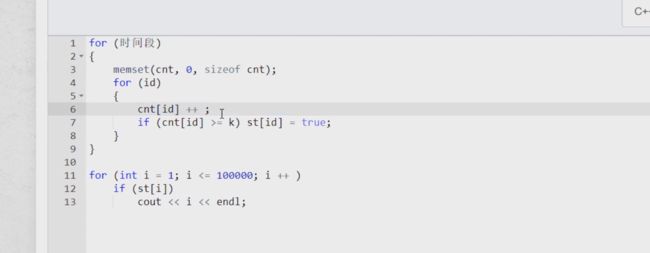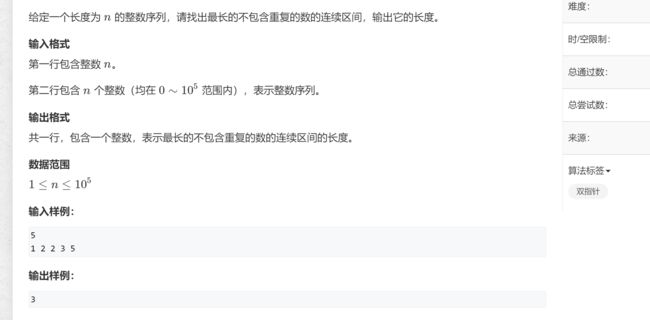【蓝桥杯专题】双指针 BFS 图论 (C++ | 洛谷 | acwing | 蓝桥)
文章目录
- 【蓝桥杯专题】(C++ | 洛谷 | acwing | 蓝桥)
-
- 双指针 日志统计
- bfs献给阿尔吉侬的花束 (BFS 模板t)
- 1113. 红与黑 (BFS)
- 完全二叉树的权重 【双指针 O(nlogn)】
- 地牢大师
- 左孩子右兄弟
- 国际象棋
- AcWing 3768. 字符串删减(每日一题)
- 799. 最长连续不重复子序列
- 最大数字
- 叶子节点 (周赛T)

【蓝桥杯专题】(C++ | 洛谷 | acwing | 蓝桥)
双指针 日志统计
链接 链接
- 思路 : 不断优化 缩减区间 , 具体看代码注释
#includebfs献给阿尔吉侬的花束 (BFS 模板t)
BFS 通常用于求解——》 最短路径
链接 链接
#include 1113. 红与黑 (BFS)
- 思路和上一题类似
链接 链接
#include完全二叉树的权重 【双指针 O(nlogn)】
链接 链接
一个数据结构题 : 完全二叉树的最右边的节点为 2 * i - 1 最左的节点为 2depth
#include地牢大师
链接 链接
思路 : 三维坐标, 用结构体存储 , queue 用不了 可以模拟队列 hh 头指针 tt 尾指针 https://www.acwing.com/video/257/
**判断 越界就 continue
能走 就 dis + 1
左孩子右兄弟
题目链接
左孩子右兄弟表示法是一种将树转化成一颗二叉树的方法;
该方法将某节点的所有兄弟节点都定位该节点的右孩子, 将该节点的任意一个孩子定位左孩子;
题目要求能够造出二叉树的最大深度;
经过观察可得, 某一层节点能够形成的深度其实就是该节点的兄弟的数量;
因此要使树的深度最深, 则树的向下构造节点的孩子数量要尽量多;
状态表示f[i] : 表示i节点作为根节点能够形成二叉树的高度;
对哪一个节点向下构造做分类: f[i] = max(f[j]) + cnt;(cnt为i节点的孩子数量)
初始化:无;
答案: f[1];
#include 国际象棋
题目链接
#include AcWing 3768. 字符串删减(每日一题)
题目 链接
- 经典
双指针算法 - 特别留意 当字符被删除的时候,字符串的每一个字符下标都是会发生变化的 , 因此可以联系到双指针
#include 799. 最长连续不重复子序列
双指针模板题- 结合哈希数组 , 如果这个数重复出现的话 , 就 减去当前这个数 并将后指针
+1 - 然后把每次的
res加上i - j + 1即可
#include 最大数字
题目 链接
#include叶子节点 (周赛T)
题目 链接
- 对于一个叶子节点,如果从该节点到根节点的路径(包括两端节点)中有超过
m - 个黑色节点连续的排列在一起,则称该节点为无效叶子节点。
#include 



